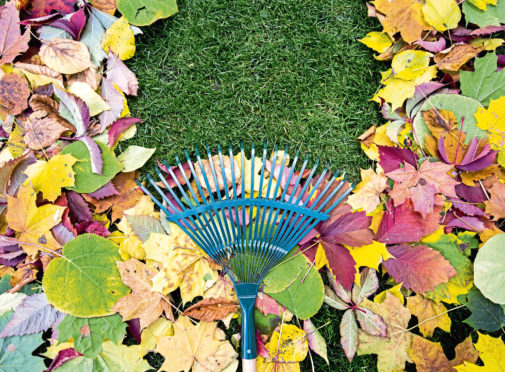
The wind that whistled through the garden a few days ago left behind a scattering of leaves across the lawn. It was an early sign of what’s to come, when the woods that surround us fire up their autumn colours and the green backdrop to our garden turns red and gold.
So far we’ve resisted using leaf blowers because of the noise and while raking by hand is a massive task, especially when the leaves are wet, on crisp, sunny days, it is a pleasure to be out of doors and immersed in the beauty of the season. Autumn is also the best time of year to dig up and divide perennials and right now, when the soil is wet and warm, roots that have been yanked from the earth will quickly settle in and start to regrow.
That’s what I’ve been doing this past week, digging out whatever seems to be running out of steam and breaking it into smaller sections then placing these into gaps where the garden needs more froth and colour. Splitting plants can seem brutal, yet ripping them apart with forks or slicing through them with a sharp knife can trigger regeneration, leading to better flowers and foliage in the years ahead.
Most perennials benefit from being split every three years or so and some, such as heucheras, will start to fade if left to grow undisturbed so splitting these is essential. Hostas, however, do better if divided in spring, so resist the temptation to tackle these now and just clear away their foliage as it fades.
One plant that I’ve been spreading around the garden is a hardy Geranium called Rozanne, which has been covered in blue flowers since early summer and which is still going strong. I’ve been dropping it into every spot in the border that needs a bit of a late-season pick-up, especially below spring shrubs where there’s not much colour at the moment now that the agapanthuses that grow around them have gone over.
Next I’ll have to find space for bulbs and my plan here is to use miniature daffodils as these bloom early and their foliage is less obtrusive once the flowers have gone over.
But which ones to choose? I’d decided on February Gold because it is among the first to appear but then I made the mistake of opening some of the bulb catalogues that pile up around the house at this time of year and was soon overwhelmed by choice.
How could I not have Topolino or WP Milner or Rip Van Winkle which with its spiky petals is the punk superstar of the miniature daffodil world. And then of course there is Tete-a-Tete, which outperforms just about everything else.
One thing is certain, if I don’t make up my mind and place an order very soon then the best of the bulbs will have gone.
Decisions? Decisions? Gardening expert and columnist Agnes Stevenson is already planning her spring garden and we’re not yet in autumn!

Enjoy the convenience of having The Sunday Post delivered as a digital ePaper straight to your smartphone, tablet or computer.
Subscribe for only £5.49 a month and enjoy all the benefits of the printed paper as a digital replica.
Subscribe